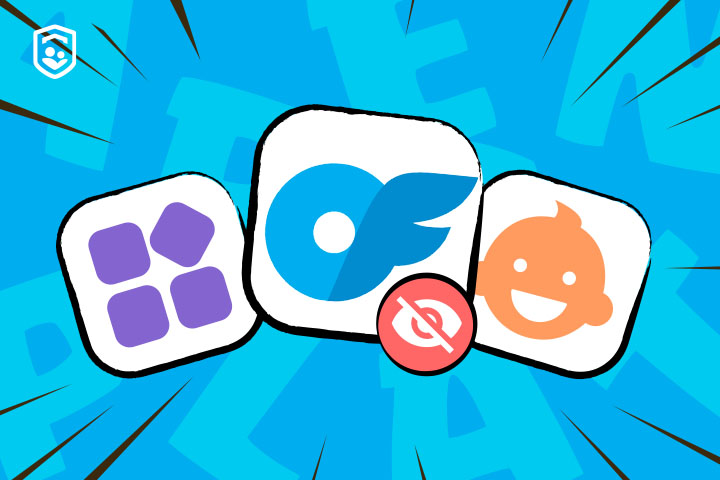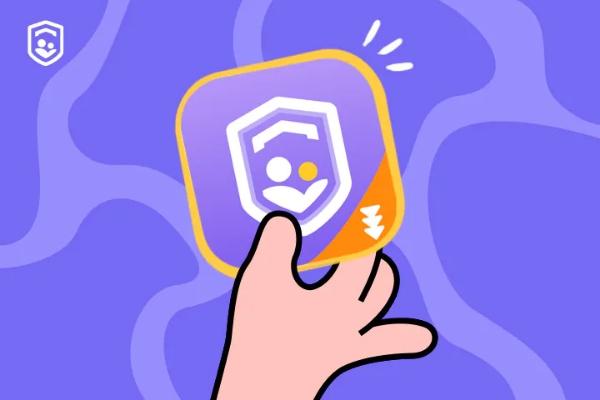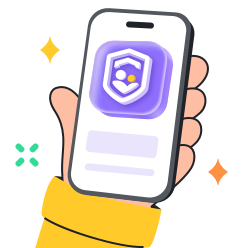In this digital era, although the Internet provides a lot of benefits to people of all ages. However, at the same time, it also exposes people, especially teens, to online dangers, and one of them is exposure to adult websites. So, as a parent, you should be aware of sites like OnlyFans.
They are adult subscription-based platforms that are known for containing adult content. However, teens, because of their curiosity, might gain access to such websites, which is detrimental to their mental well-being. So, in this post, we’ll make you aware of 10 sites like OnlyFans and share tips to prevent kids from accessing such websites.
What are sites like OnlyFans?
OnlyFans is a site where users subscribe to various creators to gain access to different types of content. However, it is mostly known for adult content. Like most social media, there are less to no restrictions on what can be posted on OnlyFans.
Why sites like OnlyFans are appealing?
Now, you might be wondering why people use sites like OnlyFans. Well! First of all, they give creators a bets opportunity to earn money directly from their subscribers. Besides, these sites are very appealing to users because of the ease of access, privacy, and personalized interactions.
However, the privacy and freedom offered by such sites come with very serious risks, especially for kids. This is why, if you are a parent, it is important to always be vigilant. Keep in mind that encountering such platforms can hinder healthy emotional and mental development.



Also, most of these platforms are a magnet to sexual predators who seek to exploit children. Thus, knowledge of sites like OnlyFans is instrumental for you in helping your child navigate the internet without encountering life-threatening online dangers.
How do sites like OnlyFans work?
OnlyFans is one of the many websites you might have heard of. Perhaps you’ve wondered how such sites actually work. Well, no need to worry. Here, I’m going to share with you a step-by-step explanation that demystifies the functioning of such platforms and why you need to be cautious.
A user registers an account
First of all, a user registers an account intending to be a creator. This indicates that they intend to upload some digital content and monetize it. This is accessible to literally anyone, including strangers on the internet that your child could encounter.
Posting of content
Next, the creator begins to post photographs, recordings, and even confidential correspondence. Although some of the content might appear to be innocent, a large number of creators share sexual and adult content. This is the reason why the websites and platforms are strictly for adults, and not for minors or teenagers.
Viewers pay to access content: Understanding the subscription model
After that, individuals interested in viewing the creator’s content are required to pay a specific amount called a subscription fee. Much like subscribing to Netflix, this Subscription Model gives access to all the content the creator shares. You know, creator revenues increase based on the number of people subscribing.
Other ways for creators to earn money on sites like OnlyFans
Also, some creators offer private chats, locked photos, or personalized videos as part of their offer. This permits viewers to pay even more money to access specialized content.
Moreover, the more clicks and interaction a creator gets, the more they are likely to earn. This explains the need for many to post shocking or sexual content, as that earns more clicks and money.
So, if you are a parent reading this blog, keep in mind that as a teenager, the premise of such sites seems new and intriguing. However, they may be exposing your children to unsafe content from a few clicks while looking for new content on TikTok or YouTube.
Thus, understanding the workings, you would definitely set healthy limits for your child to keep them digitally safe.
Worried about inappropriate exposures to your kids
Use parental controls to manage inappropriate exposures for your families
10 sites like OnlyFans
OnlyFans as a platform where users share personal or adult content and earn through subscriptions. But similar platforms, or clones of OnlyFans, exist and are gaining traction. These sites may appear like regular social media at first, but a lot of them have sharing of explicit content as their primary goal.
That is why it is critical to know what these sites are, how they operate, and why they might be a danger for your child. So, below, here are10 sites like OnlyFans, along with age ratings and what to watch out for.
Fansly
- Age rating: 18+
- Though age checks are implemented, they can easily be circumvented. Teens might be able to access it using a handy fake identity or by seeing screenshots shared by others.
Similar to OnlyFans, Fansly lets creators of all kinds upload and monetize content with paid subscriptions. Though a good portion of users post regular content, the site is best known for adult material.
What parents should know:
JustForFans
- Age rating: 18+
- There is no safe version of the site. Underage users will not be able to escape adult content, including live streams and other materials.
JFF is an adult-centered platform that is gaining focus. It is especially popular in the LGBTQ+ community. Creators share explicit content with the functionality of premium video calls.
What parents should know:
LoyalFans
- Age rating: 18+
- The site may look like a pan club site, but the sexuality embedded in it is alarming. It is best to check and monitor your child’s browsing history or any online activities to know if they have accessed it.
Loyal fans allow users to share content, chat with followers, and earn money from private messages or video calls. However, it is also packed with adult content.
What parents should know:
FanCentro
- Age rating: 18+
- The site seems to be influencer-friendly, but several users happen to be sex workers and sport it on social media. If your child follows certain influencers on social media, it is best to stay vigilant.
FanCenro is a platform that helps influencers sell exclusive content, including pay-per-view videos and private chats. However, most of the content is of an explicit nature.
What parents should know:
My.Club
- Age rating: 18+
- The website’s sleek look might be appealing, but a majority of the content is geared towards adults. So, monitor the content your child encounters by protecting their account.
My. Club is a subscription platform similar to OnlyFans. While some users share fitness or lifestyle content, adult material is the norm.
What parents should know:
CamSoda
- Age rating: 18+
- The entire site is adult-based. There is no safe or kid-friendly side of CamSoda, so block access using parental control settings.
CamSoda is a livestreaming service centered on adult webcam shows. Users have the option to pay to access live shows or view recorded content.
What parents should know:
MyFreeCams
- Age rating: 18+
- It’s not appropriate for minors of any age. It’s a good idea to look into safe search options and track search history for any suspicious activity.
MyFreeCams allows adult webcam shows where users can reward the models with tips. It’s one of the oldest sites in the adult webcam sector.
What parents should know:
Fanvue
- Age rating: 18+
- While users of social media platforms may look innocent on the surface, they often peddle adult-themed content on Fanvue.
This site gives content creators the ability to distribute content for a fee. While many users do this for art or fitness, the site is also known for adult content.
What Parents Should Know:
Fantime
- Age rating: 18+
- There is a lack of robust restrictions on adult content. Users, especially teens on TikTok and Instagram, are likely to encounter links to Fantime.
Fantime is another content-sharing site where creators earn through subscriptions. It blends lifestyle with adult content.
What parents should know
ManyVids
- Age rating: 18+
- This is another highly explicit porn site. If your child has access to the internet, they can easily stumble on damaging materials. It is best to have conversations with your child about online safety and use content filters to restrict access.
The site enables users to sell adult videos and provide live streaming services. Users can sell physical products and operate subscription services as well.
What parents should know:
In short, having knowledge regarding these platforms is essential to ensuring the safety of your child. While these websites are intended for adults, teenagers often bypass age restrictions. So, it is crucial to stay informed about your kids’ digital activities.
Is it okay for teens to watch OnlyFans?
OnlyFans is definitely not appropriate for teens to view. This is a platform for adults, so exposure to harmful content is possible. While it may be tantalizing or trending online, indulging in it at a young age has the potential to cause lasting damage to their psyche, emotions, and even their physical safety.
Let’s go through the risks associated with watching OnlyFans in more depth.
Misleading relationship messages:
OnlyFans distorts the display of genuine love and connection. Individuals may exhibit a facade of closeness and care, and that is purely for views or money. Gradually, they develop a misguided conception of affection and connection.
Harm self-esteem:
Next, the adult content may impose the unrealistic standard of comparing their life to the online figures. As what we see online isn’t ideal, as people post edited or filtered content to attract an audience. Teens usually don’t realize that thing and slowly become underconfident about their personality.
Affecting the mental well-being:
Aside from that, using platforms like OnlyFans can be emotionally damaging. Teens could feel anxious, disoriented, or even addicted without any awareness. Cumulatively, these effects can worsen their emotional state.
Online safety risks:
Again, OnlyFans is not a secure zone for teenagers. Because it caters to mature audiences, teenagers can encounter explicit material or even interact with strangers. That places teens’ privacy, safety, and well-being at risk, even if it seems like they’re just browsing.
How to protect your kids from adult content sites
While browsing the Internet, it is more likely that your kids may get exposed to adult websites. As a guardian, you need to supervise their activities and provide guidance on what is acceptable. Also, let’s explore some practical tips!
Use built-in features:
The clearly defined and easy-to-use parental control features are usually available on most smartphones and tablets. For instance, with Android, you can enable SafeSearch Mode or use Digital Well-being parental controls.
However, if you are using an iPhone, then you can use the Screen Time feature to block inappropriate websites or apps.
Keep devices in shared spaces:
Additionally, refrain from allowing your child to use smart gadgets in private quarters. Whenever practicable, device usage should be encouraged in shared or communal areas of the home. Thus, you can keep an eye on what type of content your kids are watching.
Talk often and share thoughts:
Most importantly, continue having open dialogue with kids. Gently inquire from your child what they are watching and feeling minimalism about. Tell them why some things are not safe or appropriate for their age. When you earn their trust, they are likely to come to you whenever something unusual appears.
Use of parental controls:
However, above all, the most effective approach to ensure the digital safety of kids is using third-party parental control apps.
That’s why I would recommend using the FlashGet Kids parental control app, which acts as a digital bodyguard for kids, ensuring they remain safe from Internet toxicity. For instance;



- Browser safety: FlashGet Kids allows you to block inappropriate sites like OnlyFans. Thus, ensuring a safe browsing experience for kids.
- Screen mirroring: Also, you can see live what your kids are watching on their devices by sitting in one place.
Due to parental involvement and by employing the right measures, you are able to walk alongside your child on the digital journey with assurance and control.

